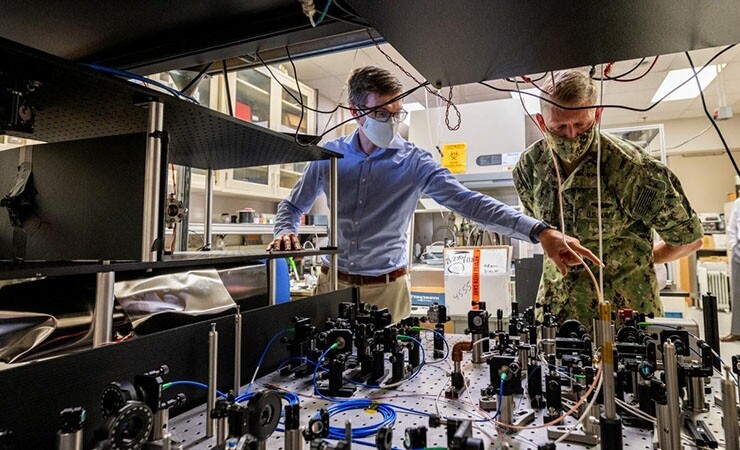
FY21 Budget Outlook: Department of Defense
The Department of Defense’s $109 billion budget for research, development, test, and evaluation (RDT&E) activities would drop by about 1% under the House and Senate’s spending proposals for fiscal year 2021, capping off a five-year period in which it surged up from about $66 billion.
Within the RDT&E total, DOD’s portfolio of basic research, applied research, and advanced technology development — referred to as the Science and Technology program — has grown over the past five years from about $12 billion to $16 billion. The Trump administration requested
The House


Basic research and STEM education
University research. Much of the 8% overall cut to basic research proposed by the Senate would fall on programs supporting university-based research. The Army, Navy, and Air Force accounts funding University Research Initiatives would together drop by 16% to $364 million, while the House proposes a 2% overall cut for them. These accounts fund Multidisciplinary University Research Initiative
DARPA. Amid its proposed cuts to basic research, the administration did seek a 10% increase to $534 million for basic research funding at the Defense Advanced Research Projects Agency. The House matches this request, while the Senate proposes a smaller increase to $514 million. Total funding for DARPA would increase about 1.5% to $3.5 billion under the House’s proposal and 1% under the Senate’s.
Social science research. Based on a cross-department prioritization exercise known as the Defense Wide Review
STEM education. The Senate would accept the administration’s proposal to roll back the budget for the National Defense Education Program from $144 million to $100 million, while the House would only make a $7 million cut. The program supports STEM talent development through scholarships and fellowships, STEM outreach to children of military families, and initiatives such as the Manufacturing Engineering Education Program.
Minority-Serving Institutions. The House proposes to expand dedicated support for basic research at Minority-Serving Institutions from $53 million to $81 million, building on a recent increase that Congress directed toward the creation of four research centers
Selected technology priorities

Chief of Naval Research Rear Adm. Lorin Selby, right, views an atom interferometer at the Naval Research Laboratory.
(Image credit - Jonathan Steffen / U.S. Navy)
Quantum information science. DOD funding for QIS research is distributed across many programs and the department does not report an overall figure. In recent years, though, Congress has singled out specific initiatives for support. Last year, it specifically provided the Air Force $8 million to set up a new quantum information science research center and $4 million for quantum communications research within the Dominant Information Sciences and Methods program. This year, the House and Senate both propose $10 million for each of these activities.
5G communications. The Senate matches DOD’s request to increase the budget for its Next Generation Information Communications Technology Program from $200 million to $449 million and to create an associated $35 million early-stage R&D program. Together these programs comprise a new initiative known as “5G to Next G.”
Micro nuclear reactor. The Senate allocates $70 million for the DOD Strategic Capabilities Office’s effort to develop a mobile nuclear reactor, known as Project Pele
Directed energy. Applauding DOD’s increasing focus on developing directed energy technologies such as lasers and microwave beams, the Senate includes $2.5 million above the budget request for the department to create a Directed Energy Center of Excellence. It specifically encourages the Air Force to establish “one or more centers focused on directed energy research, education, testing, and technology transfer.”
Cooperative Threat Reduction program. The Senate accepts DOD’s request to cut the budget for its Cooperative Threat Reduction program by 36% to $238 million, while the House would only allow for a 4% cut. The program funds international efforts to secure and eliminate items such as nuclear material, chemical agents, and biological pathogens. DOD’s proposal stems from its Defense-Wide Review, which recommended eliminating program activities focused on “low-to-near zero probability threats.”
Research security. The House matches DOD’s request to increase funding from $21 million to $30 million for a recently established program called “Maintaining Technology Advantage,”


